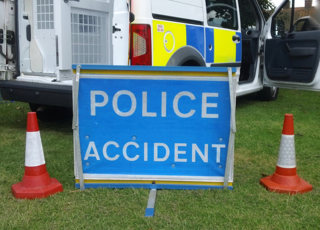There were 1,748 people killed on the roads in Great Britain last year, according to provisional figures published by the Department for Transport (DfT) today.
It’s a figure which has flatlined since 2012 when 1,754 people were killed.
The Government statistics suggest 76 people were killed or seriously injured on Great Britain's roads every day in 2019, on average.
The road death figure is lower, however, than the provisional figure of 1,926 deaths in 2019, published by the European Transport Safety Council (ETSC) in June.
Year-on-year, last year's 1,748 road deaths was 2% down on the 1,754 people killed on the country's roads in 2018.
It means that, on average, almost five people are still dying on UK roads every day, with people driving in the course of their work, including company car, van and truck drivers, said to represent one-third of all road deaths.
In 2019, there were 67 goods vehicle occupant (including heavy and light goods vehicle) fatalities, of which 56 were goods vehicle drivers and 11 were goods vehicle passengers.
Goods vehicle fatalities have fluctuated between 47 and 67 in the past ten years.
Overall, goods vehicle casualties have shown a decreasing trend, however, decreasing by 3% from 5,071 in 2018, to 4,938 in 2019, of which in the latest year 80% were goods vehicle occupant driver casualties.
Goods vehicle occupant traffic has shown an increasing trend from 2013 to 2017 and has remained stable since.
In 2019, goods vehicle traffic was 68 billion vehicle miles, a slight decrease of 0.2% compared to 2018.
The latest DfT road death data also shows that motorcyclist fatalities decreased in 2019 compared to 2018.
In total, 335 motorcyclists were killed during 2019, down 5% from 354 in 2018. However, motorcyclist fatalities have fluctuated between 319 and 365 over 2011 to 2019 with no clear trend.
Overall, motorcyclist casualties decreased by 4% between 2018 and 2019 to 16,196 casualties. Motorcyclist traffic has been stable in the past ten years.
Fatalities for older road users – aged 60 and over – showed the largest increase for any group, however, increasing by 8% from 588 in 2018 to 637 in 2019.
In the week that the Government announced a ‘£2bn cycling and walking revolution’, the DfT figures also highlight that the number of pedestrians and cyclists deaths in 2019 (560 in total) has not improved over the past decade.
The vulnerability of people walking and cycling, who have a fatality rate more than 20 times that of someone in a car, highlights the urgent need for action to address the dangers of motor traffic, as the Government seeks to encourage more people to choose to walk or cycle, according to the road safety charity, Brake.
Director of campaigns, Joshua Harris, said: “For nearly a decade now, we have seen an appalling stagnation in the number of deaths on our roads and it’s high-time for the government to take responsibility and act.
“We need to rid our roads of dangerous drink and drug driving, introduce safe speeds in our towns, cities and rural areas and reinvigorate roads policing, which has been decimated by funding cuts.
“The Government must commit to a Vision Zero approach and the ambition to eliminate the scourge of death and serious injury from our roads for good.”
A report by HM Inspectorate of Constabulary and Fire & Rescue Services (HMICFRS), found that despite the high number of people killed on the roads in England and Wales each year, police and crime plans make little or no reference to roads policing.
It also found there has been less enforcement of drink-/drug-driving and not wearing seatbelts, with an increase in deaths attributed to these offences.
In response, the organisation's Roads Policing: Not Optional report has made a number of recommendations to encourage the police service to improve.
AA president Edmund King believes that whatever the mode of transport used on the road network, business drivers and private motorists should all expect to get to and from their destinations safely.
However, he said: "Unfortunately, too many people are still losing their lives on our roads.
“Local roads are undergoing significant changes and traffic movements are still evolving since lockdown, now is the time to set some significant and challenging road safety targets with the ambition of zero road deaths within a decade.
“As more people shun public transport and use other forms of transport, it is a good opportunity for road safety messages to be shared far and wide. Reminding everyone of the dangers including; driving tired, using their mobile phone behind the wheel and looking out for cyclists and pedestrians, will all help make our roads safer.”
Neil Greig, IAM RoadSmart’s director of policy and esearch, was scathing in his response to the road death figures. "These results are frankly embarrassing," he said.
"We need UK Government to show real leadership and push road safety up the political agenda if we are to see a return of year-on-year improvements.
“Some quick wins could include: graduated driver licencing, more traffic police on the roads, a new approach to older drivers – such as an eye test on licence renewal at 75, mature driver assessments on prescription and more powers for the Health and Safety Executive to insist on good driver risk management across UK business.”






















Login to comment
Comments
No comments have been made yet.